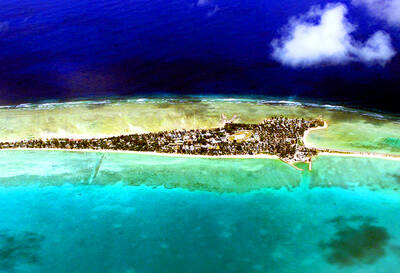It was a long time to wait for a portion of noodles. Scientists have uncovered the world's oldest known noodles, dating back 4,000 years, at an archaeological site, Lajia, along the upper reaches of the Yellow river in northwest China.
They were preserved in an upturned bowl among the debris of a gigantic earthquake. Until now, the earliest evidence for noodles has been a Chinese written description of noodle preparation dating back 1,900 years. The Lajia settlement is thought to have been destroyed by earthquake and catastrophic floods.
Lu Houyuan and his team at the Chinese Academy of Sciences in Beijing were excavating this scene of ancient destruction when they came across a well preserved earthenware bowl, embedded upside-down in a layer of clay. In the bowl they were amazed to see the remains of somebody's dinner.
"The prehistoric noodles were on top of the sediment cone that once filled the inside of the inverted bowl. Thin, delicate and yellow, they resembled the traditional la-mian noodle that is made by repeatedly pulling and stretching the dough by hand," Lu said.
An empty space between the sediment and the bottom of the bowl had prevented the soft noodles from being crushed and helped preserve them.
"The empty space must have been tightly sealed and become anoxic, allowing excellent preservation of the noodles for 4,000 years," Lu said.
When the bowl was lifted the exposure to air quickly oxidized the noodles, turning them to dust, but Lu and his colleagues still managed to analyze the remains.
By analyzing the microscopic mineral particles that form within plants, and starch grains from the noodle powder, the scientists managed to narrow down what kind of flour the noodles were made from.
Modern noodles tend to be made from wheat flour, but analysis of the ancient noodles revealed they were made from millet, used in making alcoholic drinks.
"Our findings support the belief that early plant domestication and food production relied on millet in the semi-arid Loess plateau region of China," wrote Lu in the journal Nature yesterday.
This also shows the people in the Lajia region had learned how to make a millet flour dough, that could be stretched into long, thin strands and boiled up.
The next question is what the Lajia people ate with their noodles. Lu and colleagues found bone fragments and an oily substance in the bowl and hope to analyze them to determine the recipe.

DISASTER: The Bangladesh Meteorological Department recorded a magnitude 5.7 and tremors reached as far as Kolkata, India, more than 300km away from the epicenter A powerful earthquake struck Bangladesh yesterday outside the crowded capital, Dhaka, killing at least five people and injuring about a hundred, the government said. The magnitude 5.5 quake struck at 10:38am near Narsingdi, Bangladesh, about 33km from Dhaka, the US Geological Survey (USGS) said. The earthquake sparked fear and chaos with many in the Muslim-majority nation of 170 million people at home on their day off. AFP reporters in Dhaka said they saw people weeping in the streets while others appeared shocked. Bangladesh Interim Leader Muhammad Yunus expressed his “deep shock and sorrow over the news of casualties in various districts.” At least five people,

ON THE LAM: The Brazilian Supreme Court said that the former president tried to burn his ankle monitor off as part of an attempt to orchestrate his escape from Brazil Former Brazilian president Jair Bolsonaro — under house arrest while he appeals a conviction for a foiled coup attempt — was taken into custody on Saturday after the Brazilian Supreme Court deemed him a high flight risk. The court said the far-right firebrand — who was sentenced to 27 years in prison over a scheme to stop Brazilian President Luiz Inacio Lula da Silva from taking office after the 2022 elections — had attempted to disable his ankle monitor to flee. Supreme Court judge Alexandre de Moraes said Bolsonaro’s detention was a preventive measure as final appeals play out. In a video made

It is one of the world’s most famous unsolved codes whose answer could sell for a fortune — but two US friends say they have already found the secret hidden by Kryptos. The S-shaped copper sculpture has baffled cryptography enthusiasts since its 1990 installation on the grounds of the CIA headquarters in Virginia, with three of its four messages deciphered so far. Yet K4, the final passage, has kept codebreakers scratching their heads. Sculptor Jim Sanborn, 80, has been so overwhelmed by guesses that he started charging US$50 for each response. Sanborn in August announced he would auction the 97-character solution to K4

SHOW OF FORCE: The US has held nine multilateral drills near Guam in the past four months, which Australia said was important to deter coercion in the region Five Chinese research vessels, including ships used for space and missile tracking and underwater mapping, were active in the northwest Pacific last month, as the US stepped up military exercises, data compiled by a Guam-based group shows. Rapid militarization in the northern Pacific gets insufficient attention, the Pacific Center for Island Security said, adding that it makes island populations a potential target in any great-power conflict. “If you look at the number of US and bilateral and multilateral exercises, there is a lot of activity,” Leland Bettis, the director of the group that seeks to flag regional security risks, said in an